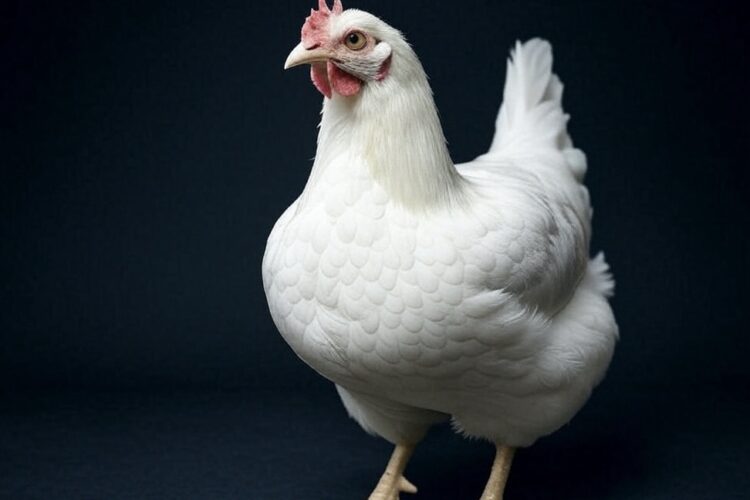In 1997, the EU banned U.S. chicken imports due to concerns over chlorine-based antimicrobial treatments, like chlorine dioxide, used to reduce pathogens such as Salmonella. The EU’s precautionary principle prioritizes strict hygiene standards and poultry welfare, viewing these chemical rinses as risky, potentially masking poor farm practices. The U.S. insists chlorine washes are safe and effective, backed by science, sparking a trade dispute. This clash, debated in WTO and TTIP talks, highlights differing food safety philosophies. The ban, still in place in 2025, fuels discussions on consumer health, food transparency, and global trade barriers.
Long Version
In 1997, the European Union (EU) imposed a controversial ban on U.S. chicken imports, a decision that sparked decades of debate over food safety, international trade, and regulatory philosophies. The ban, rooted in concerns over the use of chlorine-based antimicrobial treatments in U.S. poultry processing, highlighted stark differences between the U.S. and EU approaches to consumer health, hygiene standards, and agricultural policy. This article provides a comprehensive exploration of the ban, its origins, scientific underpinnings, trade implications, and ongoing relevance in global food systems.
The Genesis of the Ban: Chlorinated Chicken and Food Safety Concerns
The EU’s decision to ban U.S. chicken imports in 1997 centered on the use of Pathogen Reduction Treatments (PRTs), specifically chlorine washes like chlorine dioxide, sodium hypochlorite, and peracetic acid, applied to poultry carcasses in the U.S. to reduce pathogens such as Salmonella and Campylobacter. These antimicrobial treatments were standard in U.S. poultry processing, designed to enhance hygiene practices and minimize foodborne illness. However, the EU viewed these chemical rinses as a potential risk to consumer health and a sign of inadequate poultry welfare and hygiene standards earlier in the production chain.
The EU’s regulatory framework, guided by the precautionary principle, prioritizes minimizing risks even in the absence of conclusive evidence. The European Food Safety Authority (EFSA) and other bodies raised concerns that chlorinated chicken could mask underlying deficiencies in farm-level hygiene, potentially contributing to antimicrobial resistance or leaving chemical residues. In contrast, the U.S. argued that chlorine washes were safe, effective processing aids backed by scientific studies, with no evidence of harm when used within approved limits. This clash of perspectives—science-based risk assessment in the U.S. versus precautionary risk avoidance in the EU—set the stage for a prolonged trade dispute.
Regulatory Differences: U.S. vs. EU Approaches to Poultry Processing
The ban reflects fundamental differences in food regulations and agricultural policy. In the U.S., the United States Department of Agriculture (USDA) oversees poultry processing, emphasizing pathogen reduction through interventions like antimicrobial treatments. The U.S. system allows for chemical rinses to compensate for potential contamination during slaughter, viewing them as a critical step in ensuring food safety. This approach aligns with a farm-to-fork philosophy that prioritizes end-product safety over process controls.
Conversely, the EU’s Common Agricultural Policy (CAP) and food safety regulations, enforced by bodies like the EFSA, emphasize prevention over remediation. The EU mandates stringent hygiene standards throughout the poultry production chain, from farm conditions to slaughter, to minimize contamination risks. The use of antimicrobial treatments is seen as a last resort, with the EU arguing that proper poultry welfare and sanitation practices reduce the need for such interventions. This food transparency focus resonates with European consumers, who often associate chemical-free production with higher quality and safety.
The Science Behind Chlorine Washes: Safety or Risk?
The debate over chlorinated chicken hinges on scientific evidence. U.S. regulators, supported by studies from the Food and Drug Administration (FDA) and Centers for Disease Control and Prevention (CDC), assert that chlorine-based PRTs are safe at approved concentrations, effectively reducing pathogens without leaving harmful residues. Research shows that Salmonella and Campylobacter levels drop significantly after treatment, lowering the risk of foodborne illness. The U.S. also argues that chlorine washes are processing aids, not additives, as they are rinsed off and do not remain in the final product.
The EU, however, cites potential risks. While the EFSA acknowledges that chlorine washes reduce pathogens, it questions their necessity and long-term safety. Concerns include the formation of chlorinated byproducts, which some studies suggest could be carcinogenic, though evidence is inconclusive. The EU also worries about antimicrobial resistance, as overuse of chemical treatments could reduce their efficacy over time. Additionally, consumer advocacy groups in Europe argue that reliance on PRTs may incentivize lax hygiene practices on farms, undermining poultry welfare and overall food safety.
Trade Implications: A Transatlantic Standoff
The 1997 ban was more than a food safety issue; it was a significant trade barrier in international trade. The U.S., a major poultry exporter, viewed the ban as protectionist, arguing it unfairly restricted access to the lucrative European market. The World Trade Organization (WTO) became a battleground for the dispute, with the U.S. challenging the EU’s measures as unscientific and discriminatory. The WTO’s rulings often leaned toward science-based standards, putting pressure on the EU to justify its precautionary principle.
The ban also complicated negotiations for the Transatlantic Trade and Investment Partnership (TTIP), a proposed U.S.-EU trade agreement in the 2010s. U.S. negotiators pushed for the EU to lift the ban, while European policymakers and consumer advocacy groups resisted, framing chlorinated chicken as a symbol of lower food standards. The issue gained further traction during Brexit, as the UK debated whether to align with U.S. or EU standards in post-Brexit trade deals. The UK ultimately retained the EU’s ban, reflecting public demand for food transparency and high hygiene standards.
Cultural and Consumer Perspectives
The EU’s rejection of U.S. chicken resonates deeply with European consumers, who prioritize food transparency and natural production methods. Terms like chlorinated chicken evoke distrust, conjuring images of industrial farming and chemical-laden food. Consumer advocacy groups, such as FoodWatch and the European Consumer Organisation (BEUC), have amplified these concerns, framing the ban as a defense of consumer health and poultry welfare. Surveys consistently show that European consumers prefer poultry produced without antimicrobial treatments, associating chemical-free meat with quality and safety.
In the U.S., however, consumers are less aware of or concerned about chlorine washes, viewing them as a standard part of poultry processing. The U.S. poultry industry, represented by organizations like the National Chicken Council, emphasizes the safety and affordability of American chicken, arguing that PRTs enable cost-effective production without compromising quality. This cultural divide underscores the challenge of harmonizing food regulations in a globalized market.
The Ongoing Debate: Relevance in 2025
As of May 13, 2025, the EU’s ban on U.S. chicken remains in place, though the issue continues to surface in trade discussions. The rise of antimicrobial resistance as a global health concern has strengthened the EU’s case, with regulators advocating for reduced use of chemical treatments in food production. Meanwhile, the U.S. poultry industry has explored alternative PRTs, such as organic acids, to meet international standards, though chlorine-based washes remain prevalent.
The ban also highlights broader questions about food standards in a changing world. As climate change and population growth strain food systems, balancing food safety, affordability, and sustainability becomes critical. The EU’s farm-to-fork strategy, part of the European Green Deal, emphasizes sustainable practices and reduced chemical use, reinforcing its stance against chlorinated chicken. Conversely, the U.S. argues that PRTs are essential for meeting global demand while keeping prices low.
Conclusion: A Symbol of Regulatory and Cultural Divide
The 1997 EU ban on U.S. chicken is more than a trade dispute; it is a case study in regulatory differences, scientific interpretation, and cultural values. The EU’s commitment to the precautionary principle and food transparency clashes with the U.S.’s science-based, pragmatic approach to pathogen reduction. While the ban protects European consumers’ preferences, it also fuels trade barriers and complicates international trade.
For policymakers, the challenge lies in bridging these divides without compromising consumer health or economic interests. For consumers, the debate underscores the importance of understanding food regulations and their impact on safety, quality, and choice. As global food systems evolve, the chlorinated chicken saga remains a potent reminder of the complexities at the intersection of science, policy, and culture.
Hashtags For Social Media
#foodsafety #chlorinatedchicken #euban #uschicken #poultryfarming #foodregulations #internationaltrade #eupolicy #usagriculture #hygienepractices #pathogenreduction #salmonella #campylobacter #antimicrobialresistance #precautionaryprinciple #consumerhealth #foodtransparency #tradebarriers #wto #ttip #brexitimpact #poultrywelfare #farmtofork #eustandards #usstandards #fooddebate #globalfood #sustainablefarming #foodpolitics #eatclean
Related Questions, Words, Phrases
why did the eu ban us chicken in 1997 | what is chlorinated chicken | eu us chicken ban explained | reasons for eu poultry import ban | is chlorine wash in chicken safe | how does the eu regulate poultry | us poultry hygiene practices | what are pathogen reduction treatments | eu food safety standards vs us | why does the eu use the precautionary principle | impact of eu chicken ban on trade | what is the wto role in us eu chicken dispute | chlorinated chicken health risks | how does chlorine affect poultry | differences in us and eu poultry farming | what is the common agricultural policy | why did brexit affect chicken trade | are antimicrobial treatments necessary in poultry | what is salmonella in chicken | how does campylobacter spread in poultry | eu consumer views on us chicken | why is food transparency important in the eu | us chicken processing methods | what are chemical rinses in poultry | history of transatlantic trade and investment partnership | how does the eu ensure poultry welfare | what are the trade barriers for us chicken | why is antimicrobial resistance a concern | eu farm to fork strategy explained | how do us and eu food regulations differ | what chemicals are used in us poultry | why did the eu ban chlorine dioxide in chicken | how does the efsa evaluate food safety | what are the cultural differences in food safety views | why does the us defend chlorine washes






